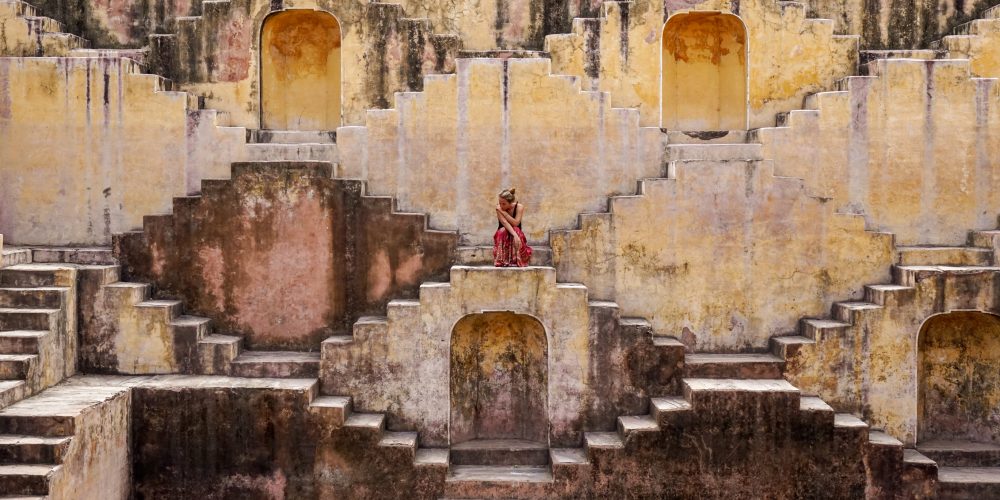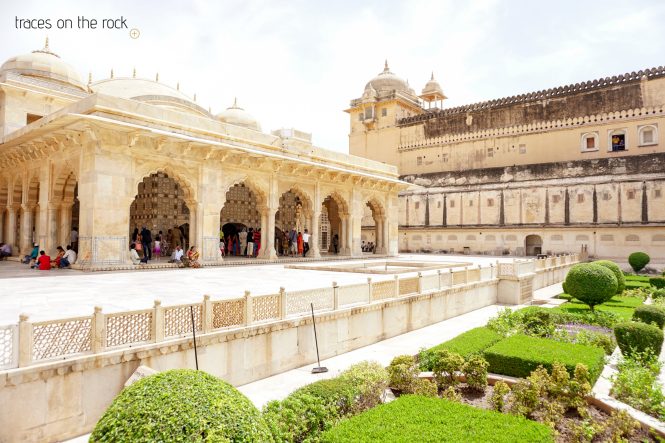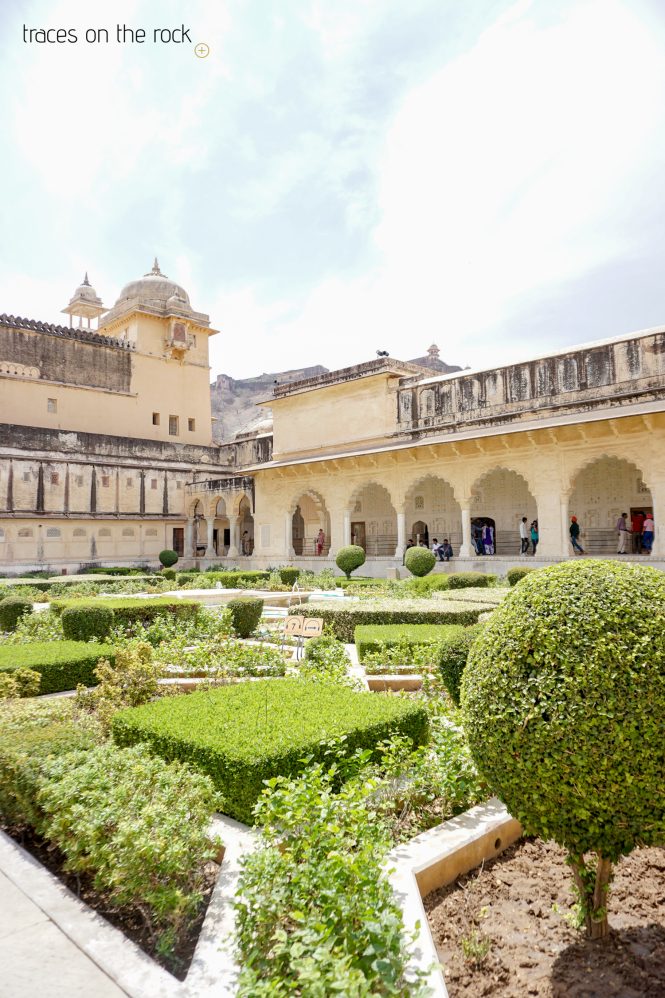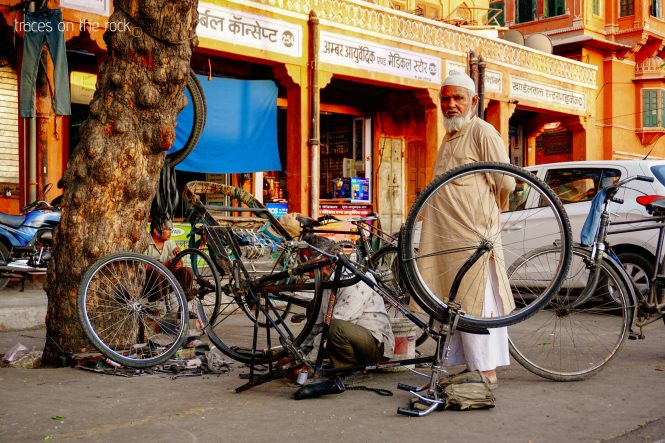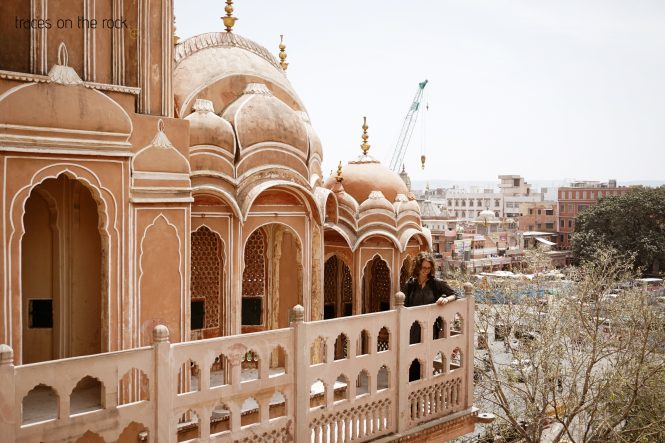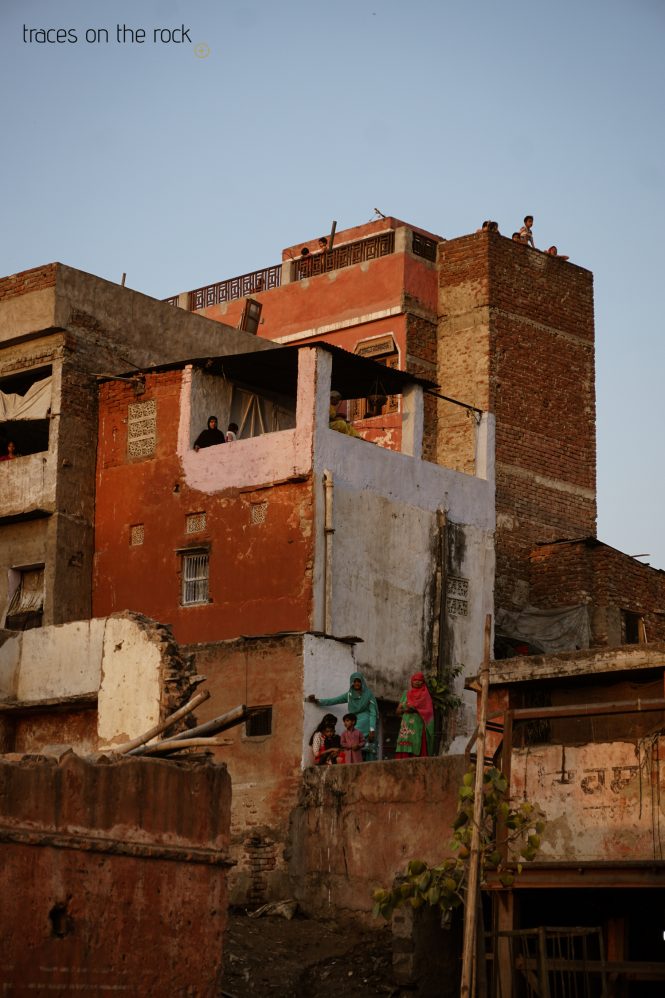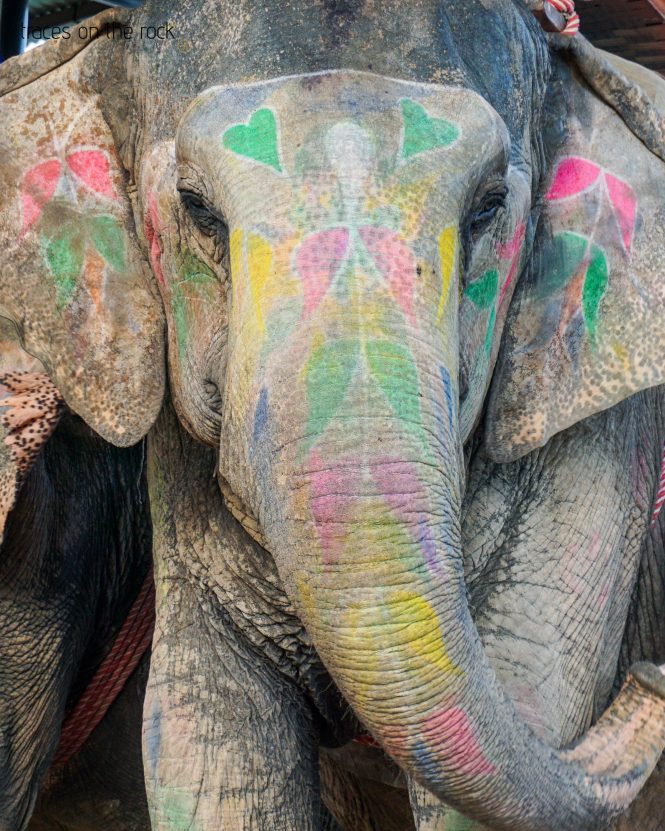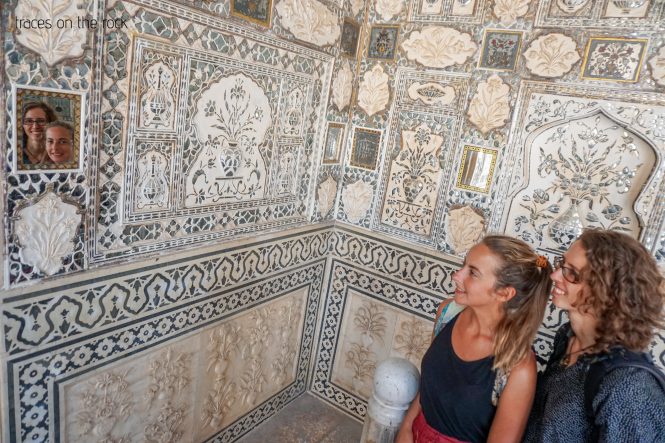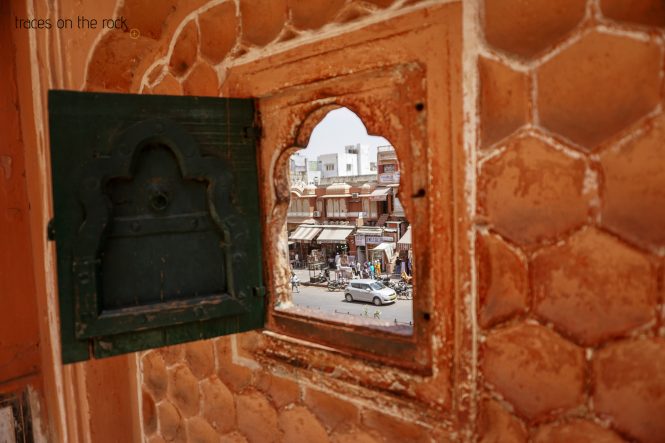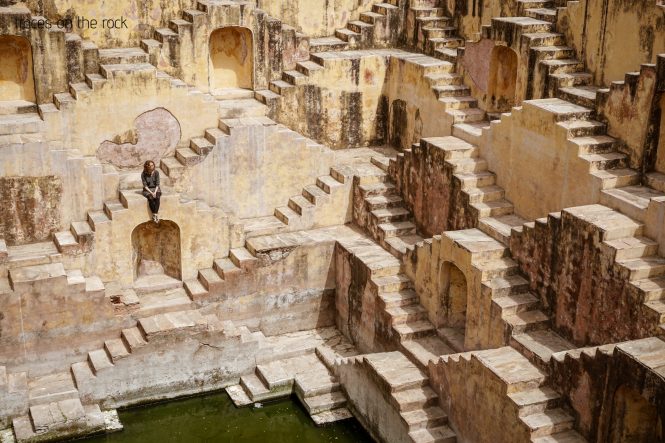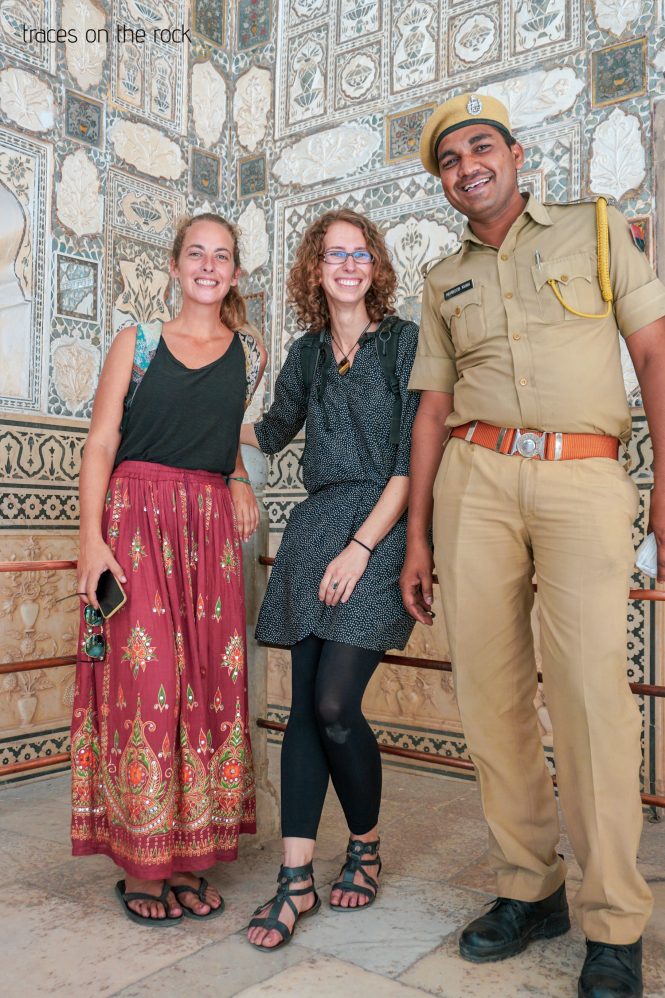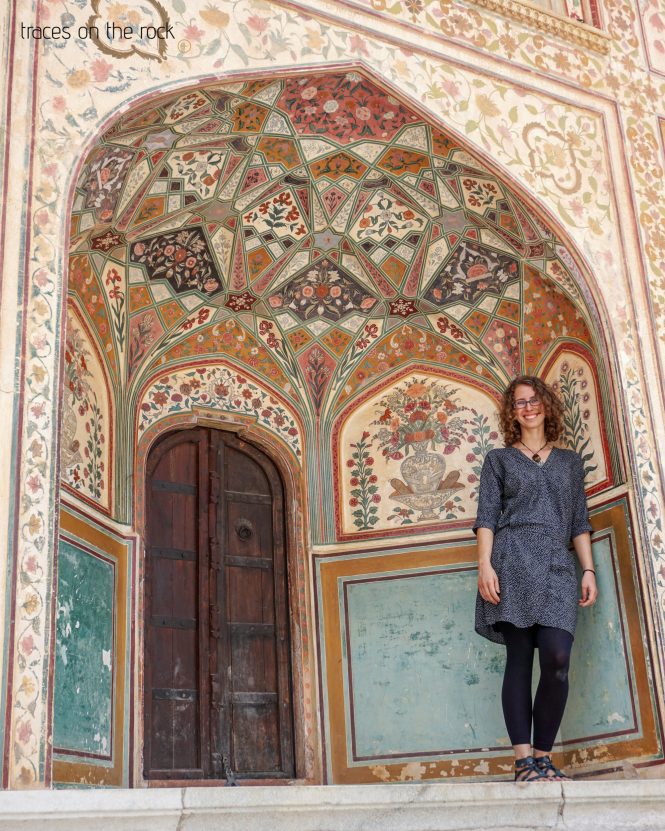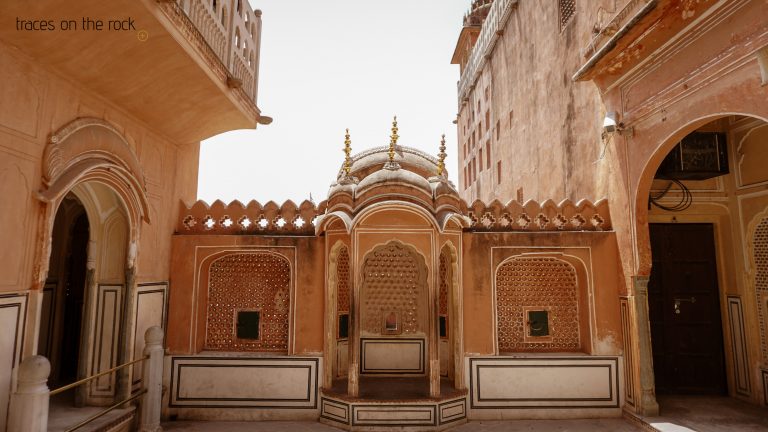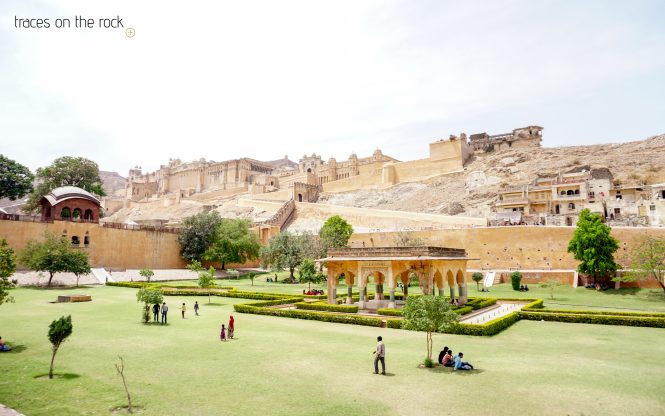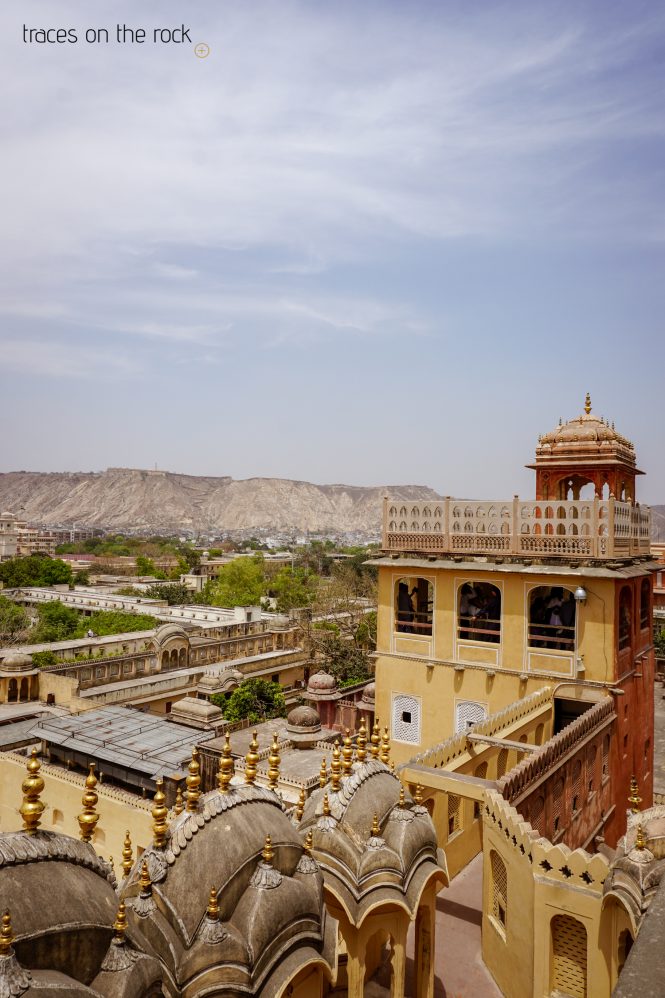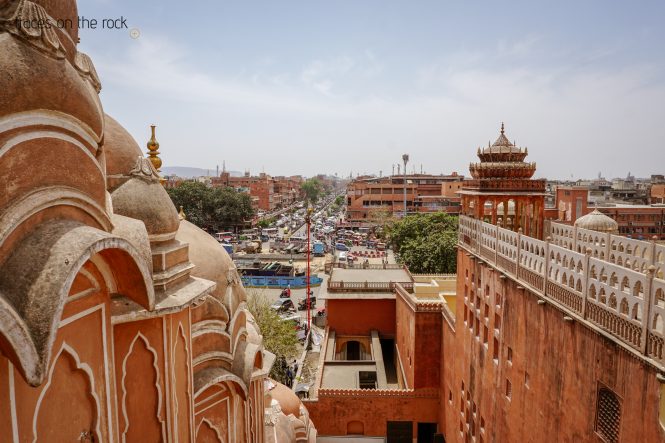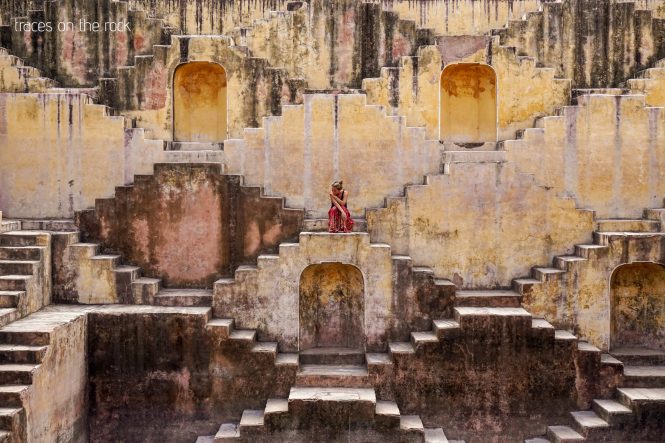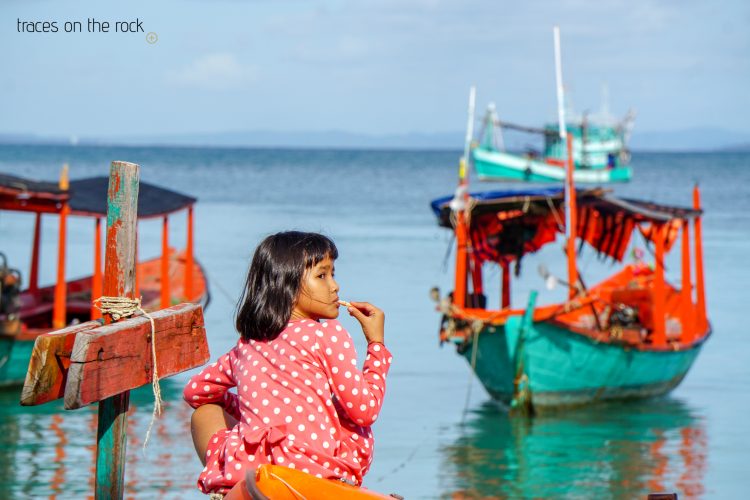The Pink City
My journey through this region of India takes me first to the state capital, Jaipur. It is also known as the “pink city” of Rajasthan. In honor of the visit of Crown Prince Albert Edward IV, Prince of Wales, in 1876, the then Maharaja Sawai Ram Singh I had the city painted in pink. Pink is traditionally the color of hospitality and welcome. To this day, this tradition has been preserved. The residents of the old town are obliged to paint their facades in these shades. Today, the city shows in a variety of red and pink tones, such as rosé, apricot, coral, or sand.
Jaipur is a younger city in Rajasthan and one of the first cities designed on the drawing board. Jaipur’s founder, Maharaja Jai Singh II (1699-1744), commissioned Vidyadhar Bhattachary, a Bengali architect, to undertake city planning and architecture in 1727. For the planning, he used the principles Shilpa Shastra (Hindu System for the science of art and crafts) and Vaastu Shastra (Hindu System for the science of architecture). Based on these principles, the city was given a grid-like structure consisting of nine rectangular sectors (chokris), a straight road network, and uniform store rows. Impressive structures such as the City Palace or the Palace of the Winds (Hawa Mahal) blend into this system. Jai Singh II was not only prince and warrior, but also a hobby astronomer. In the City Palace he set up an observatory (Jantar Mantar) with 18 instruments, which he used to measure the position of planets, to measure the time or to predict the intensity of the monsoon.
Amer Fort
The capital of Rajasthan was originally located in Amer, which is located about 10 kilometers from Jaipur. The Amer fort (or Amber fort) was the seat of power. Perched high on a ridge of the Aravalli Mountains, it is built of white marble and red sandstone. The main entrance is via the Sun Gate (Suraj Pol), which got its name from the eastward orientation. The gate can be reached via a several hundred meters long, gently rising stairway. Today, tourists are carried on elephants up the path to the Sun Gate. Previously, this entrance was reserved for the royal family, dignitaries and the military.
Even from the outside, the fortress is more reminiscent of a palace due to its numerous windows, pavilions and carvings. From inside, this impression is confirmed even more. The architecture of Rajasthan is fundamentally different from what I have seen so far in India. Islamic and ancient Indian cultures clash and form a unique blend of both worlds: high entrance gates, open courtyards, fountains and waterways, numerous columns, balconies and turrets, ornaments, floral and geometric ornaments, murals and sculptures of peacocks, elephants or humans in Hindi -Style. Personally, I found the countless windows particularly interesting. They are made of marble into which geometric lattice was carved. On the one hand, this allows the air to circulate and on the other hand, the female houshold can look out without being seen from outside by others. This finesse can be find in the Palace of the Winds in Jaipur, as well as in large parts of the fort. Thus, the maharaja’s wives and concubines can move unnoticed through special corridors of the palace and watch audiences or ceremonies without ever being seen. A guide at the fort told us that the Maharajah Jai Singh II only had five days off per year because of his 12 wives and 300 concubines. I could confirm these impressive numbers by no evidence.
The palace consists of four levels and has several courtyards. The main courtyard can be reached via the Sun Gate. In the first level is the Jaleb Chowk, the place where the soldiers gather and celebrate, and the Shila Devi Temple, where the maharaja worshiped the goddess Kali. On the second level is the public audience hall (Diwan-E-Aam) with its 40 impressively carved pillars. The adjoining throne room (Takht-i-Murassa) also had access to the private chambers and allowed the women to observe ceremonies and visits through the carved windows. I reach the third level via the huge Ganesh Gate. This is the jewel of Amer. In the middle of the inner courtyard lies the Aram Bagh, the garden of amusement, with open waterways for strolling. To the left is the private audience hall (Jas Mandir) of the maharaja. On the opposite one can find the the main visitor magnet of the fort: the Sheesh Mahal, also known as the Hall of Mirrors. Its walls and ceiling are decorated with countless small mirrors and broken glass. Together with the ornaments and arabesques, the mirrors form a harmonious composition. The fourth floor contains the maharaja’s private quarters.
As impressive and imposing as the palace was, Amer was struggling with problems. The growing population caused water shortage in the region. In addition, the infrastructure was not built to cover the rising amount of population. This led to the planning and founding of a new city and the future headquarters of the Maharaja: Jaipur. Although Amer was no longer the capital of the region, the fort was still used and expanded.
A look into my future
In Jaipur we also had the opportunity to do some palmistry. On the elephant farm of a friend we met his father. He took a lot of time to read our hand lines and even consulted his notebook. However, he had his difficulties with my hand lines and had to ask his family for advice as well. In India, palmistry seems like a hobby. Everybody understands a bit about it. However, my life, heart and head line were not quite clear to read. According to his interpretation, I should take care of my heart, because I could suffer a heart attack at 40. He also predicted my future in terms of finances, family and career. I am curious what will happen in the end. But it was amusing to listen to the statements.

